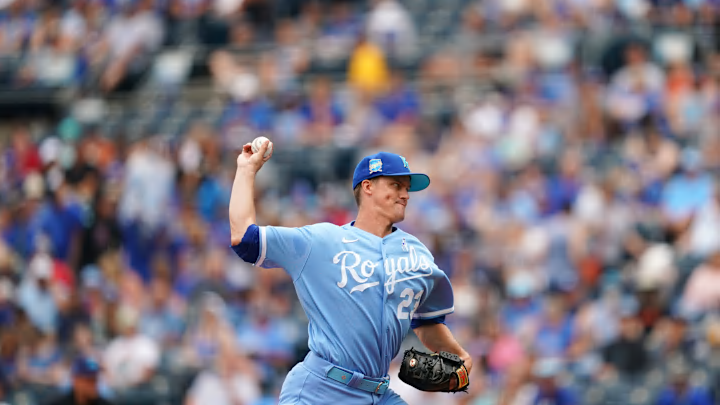The KC Royals pitching corps has struggled mightily at the game level. The group has the second-fewest wins, and third-worst ERA, and still struggles to produce strikeouts while limiting walks. The staff has looked downright dominant at times, but the bad quickly outweighs the good this year.
If die-hard fans want to try and find some sort of positives, Sabermetrics is usually a good way to find good individual performances. When Bill James coined this term last century, Sabermetrics was mostly relegated to baseball's nerdiest fans. As the years have passed though, stats like OPS, OBP, and more are more and more mainstream. Those metrics focus on batters, however. IF you want a Sabermetric focusing on pitchers, FIP is the way to go.
What is FIP?
FIP stands for Fielding Independent Pitching, and it is a statistical measure used in baseball to evaluate a pitcher's performance. FIP aims to assess a pitcher's skill by focusing on the aspects of pitching that the pitcher can control directly, independent of the performance of their fielders.
FIP takes into account the three outcomes that are most directly influenced by the pitcher: strikeouts, walks, and home runs allowed. These statistics are considered to be more under the control of the pitcher, as they are not heavily influenced by the performance of the defense behind them. FIP is designed to provide a more accurate representation of a pitcher's effectiveness by removing the effects of defense and luck.
The formula for calculating FIP is:
FIP = ((13 * HR) + (3 * BB) - (2 * K)) / IP + C
Yes, PEMDAS still applies in baseball for all you 2000s kids.
- HR represents the number of home runs allowed by the pitcher.
- BB represents the number of walks issued by the pitcher.
- K represents the number of strikeouts recorded by the pitcher.
- IP represents the number of innings pitched by the pitcher.
- C is a constant that is usually adjusted to match the league average ERA for a given season.
By focusing on these fundamental aspects of pitching performance, FIP provides a metric that is considered to be a more accurate representation of a pitcher's true skill level, as it removes factors that are beyond their direct control. So, the three true outcomes for a pitcher are on full display in FIP. The Royals boast a below-average rotation as far as in-game results go, but are there any Royals standouts regarding FIP?
